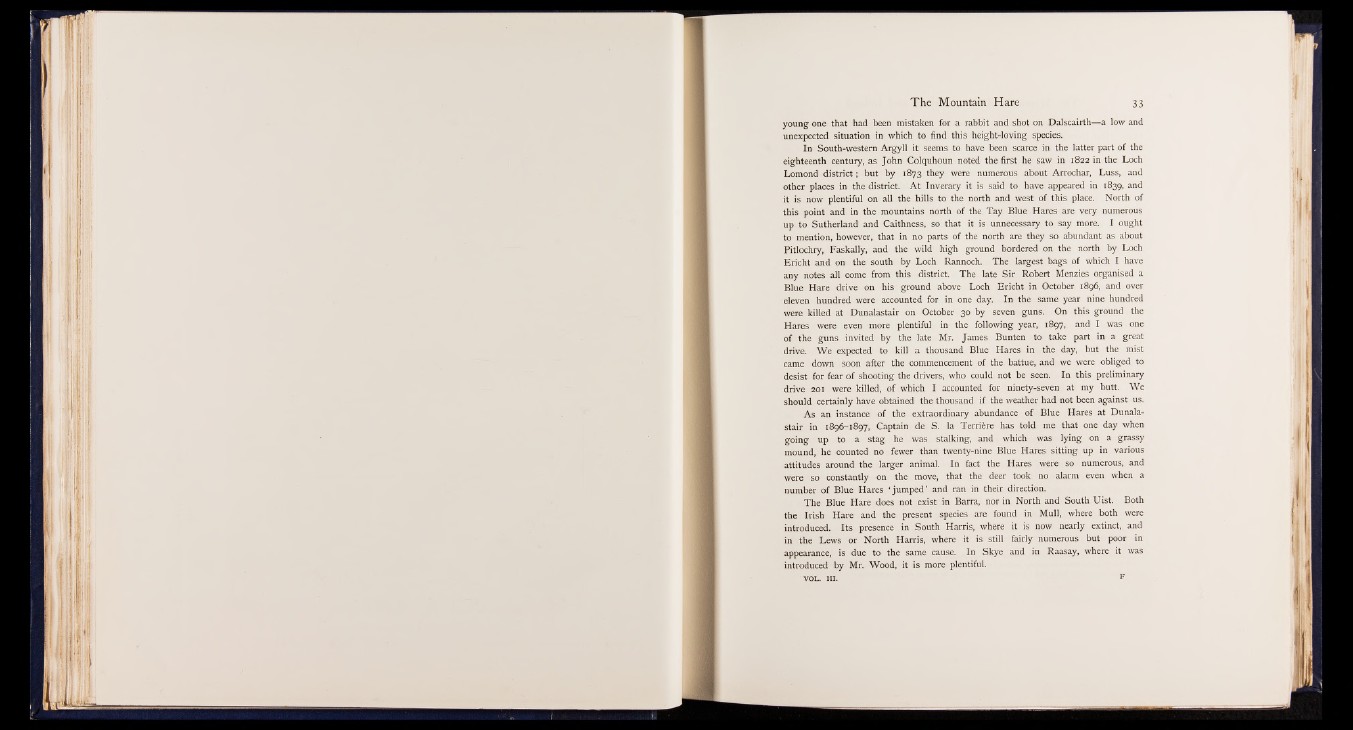
young one that had been mistaken for a rabbit and shot on Dalscairth— a low and
unexpected situation in which to find this height-loving species.
In South-western Argyll it seems to have been scarce in the latter part of the
eighteenth century, as John Colquhoun noted the first he saw in 1822 in the Loch
Lomond district; but by 1873 they were numerous about Arrochar, Luss, and
other places in the district. At Inverary it is said to have appeared in 1839, and
it is now plentiful on all the hills to the north and west of this place. North of
this point and in the mountains north of the Tay Blue Hares are very numerous
up to Sutherland and Caithness, so that it is unnecessary to say more. I ought
to mention, however, that in no parts of the north are they so abundant as about
Pitlochry, Faskally, and the wild high ground bordered on the north by Loch
Ericht and on the south by Loch Rannoch. The largest bags of which I have
any notes all come from this district. The late Sir Robert Menzies organised a
Blue Hare drive on his ground above Loch Ericht in October 1896, and over
eleven hundred were accounted for in one day. In the same year nine hundred
were killed at Dunalastair on October 30 by seven guns. On this ground the
Hares were even more plentiful in the following year, 1897, and I was one
of the guns invited by the late Mr. James Bunten to take part in a great
drive. We expected to kill a thousand Blue Hares in the day, but the mist
came down soon after the commencement of the battue, and we were obliged to
desist for fear of shooting the drivers, who could not be seen. In this preliminary
drive 201 were killed, of which I accounted for ninety-seven at my butt. We
should certainly have obtained the thousand if the weather had not been against us.
As an instance of the extraordinary abundance of Blue Hares at Dunalastair
in 1896-1897, Captain de S. la Terrifcre has told me that one day when
going up to a stag he was stalking, and which was lying on a grassy
mound, he counted no fewer than twenty-nine Blue Hares sitting up in various
attitudes around the larger animal. In fact the Hares were so numerous, and
were so constantly on the move, that the deer took no alarm even when a
number of Blue Hares ‘ jumped’ and ran in their direction.
The Blue Hare does not exist in Barra, nor in North and South Uist. Both
the Irish Hare and the present species are found in Mull, where both were
introduced. Its presence in South Harris, where it is now nearly extinct, and
in the Lews or North Harris, where it is still fairly numerous but poor in
appearance, is due to the same cause. In Skye and in Raasay, where it was
introduced by Mr. Wood, it is more plentiful.
VOL. in.